Review by Wallace Wyss –
By Roy Lonberger
-Hardbound
-440 pages
-$375 list price
-13×11 in, 33×28 cm
-ISBN: 9781366831507
More than 50 years ago, I was cleaning a swimming pool in Birmingham Michigan when I noticed the home owner arrived in a concept car; a bit of a surprise as they weren’t usually driven on the street. Then the next time I went there he had two concept cars, then three, so I finally asked “What’s the deal?” and he said he was the Styling chief of GM and that he liked to drive them on the street to evaluate them on the road.
That man was William L. Mitchell. Bill Mitchell, it turns out, was one of the most flamboyant car designers in the American scene, a worthy successor to his mentor Harley Earl.
Earl of course was the man who invented car styling as we know it in America. He had been hired away from a custom car garage run by his family in California (where they built cars for movie stars) and brought to cold snowy Detroit where he created a design empire with himself as emperor.
Mitchell worked for him before the war; his most significant achievement then, a car called the LaSalle and in 1958 Mitchell succeeded Earl.
The author of this book, Roy Lonberger, was there in the 1960s when Mitchell’s juggernaut got rolling, working his way up to heading up the so called “secret Studio-X” during the mid-1960s. The object of this studio was that it was not tied to any one marque, not Buick, Cadillac, Oldsmobile, Pontiac or Chevrolet, but could just initiate ideas, build a concept car and later different Divisions could vie for the production design.
The book I was sent to review is called he Platinum First Edition and has 440 pages.
First of all the impact of the book is impressive. This is a coffee table book for which you need a hefty coffee table. It has a cover photo of the famous Mako Shark II show car, designed by Larry Shinoda when he was at Studio X, and shot by Michael Fuhrman, the best studio photographer in the US.
Not only does the book have many historical photographs (many with hand written catalog numbers revealing they are from the Styling section’s own library) but it has more color shots shot by Michael Fuhrman.
One rather surprising bit of niche info mined in photos is Jim Hall’s Chaparrals. It has long been suspected that, while Ford embraced Carroll Shelby and worked with him to not only make the Shelby Mustang but to build a car that would win LeMans, Chevy had their own “captive” race driver, oil engineer Jim Hall of Texas. GM was intimately involved in designing his race cars at a time when GM was officially not endorsing or sponsoring racing.
Several of Mitchell’s opinions resonate through the book one of the most well known being “Doing a small car is like tailoring a dwarf.”
Mitchell hated it when downsizing hit Detroit as his forte was luxury cars, the more flamboyant the better. It is also a biography of the car design career of the author Roy Lonberger, who studied engineering at UC, then graduated from Art Center and went to GM’s Tech Center as a designer after two years at Ford.
It is perhaps good that Lonberger left GM and had another career as a head of a product design firm for 40 years (in Silicon Valley, where his business grew with the computer industry) because he can look back at the cars Mitchell directed the design of with some objectivity.
Lonberger does a good job of portraying a successful business enterprise is often based on a man with a singular vision and deep faith in his own ideas. He even mentions Mitchell didn’t draw cars himself but knew how to pick people that could carry out his vision. Basically he paints Mitchell as seeing his role as that of a conductor “waving his arms like a baton, demanding excellence, and achieving the results of his vision. He was a Maestro.”
As proof of Mitchell’s vision, he presents the cars. Now almost all of them pictured in the book are prototypes, so there’s a bit of fantasy world/real world thing going here. Naturally prototypes look better without the seams production cars have to have, to cut costs in manufacturing, and many of the concept cars in this book are more the “pure idea” of the original conception, not sullied by the safety bumper that had to be added to meet this law or that.
If this were the movie business, you could say they were all the “director’s cut” –the way the director wanted you to see their film—rather than a version cut by production realities and cost considerations.
Lonberger even devotes a couple of pages to the archivist who was assigned to work with him for three years digging out pictures and information. At some point, Lonberger, rather than restate everything he learned in his own opinion, decided that Mitchell was so complex a man that the best way to reflect the widely different impressions people had of Mitchell as a designer, leader, and manager was to run interviews of significant people in the history of GM Styling.
The original 84 contributors included all of the four succeeding VPs of Design (Welburn, Cherry, Jordan, and Rybicki), a forward by Peter de Lorenzo, a chapter from many of the chief designers during the period 1958–1977, independent design offices (including ItalDesign, Giorgetto Giugiaro, Chris Bangle, and Bertone), an article by the famous Corvette historian Karl Ludvigsen, and opinions from key figures in the racing world (Jim Hall, James Musser, and Sir Stirling Moss).
Basically the book doesn’t have much bio on Mitchell’s early life but centers on the complete twenty year period (1958-1977) that Bill Mitchell was VP Styling at General Motors and responsible for the design of America’s most iconic cars.
Mitchell had the good fortune to arrive on the scene just when America was growing in prosperity after WWII. A three bedroom house in the suburbs is $12,000, there was nearly full employment, and for decades (between Korea and Vietnam) there was no war.
The author does hint that while Mitchell could qualify for the adjective “arrogant” during the Sixties when his ideas resulted in big sales, “in the turbulent 1970s, Mitchell both lost touch of the marketplace and lost the support of executive management.” He even mentions the Phantom, a bizarre two seater coupe that got as far as a clay model finished out with paint and chrome. Mitchell was pushing it before he retired, but GM even refused to show to the public. (Lonberger said it was a tribute car, never intended to be proposed for manufacture)
Lonberger said Mitchell was all about the shape of the car, wanting as simple a form as possible but sometimes having a line or peak built into the car like a crease in a pair of dress pants.
As far as the GM-supplied photo, a lot of them have been used so many times in so many books that they are all too familiar but hope springs eternal–there’s enough of clay models that show a direction not taken to re-fire your anticipation each time you turn a page that you will see something you didn’t see before.
It is ironic there is a race car section because GM management was so dead set against racing. So it’s amazing that nearly a dozen race cars are shown, such as the Grand Sport GS-2b, a mid-engine car that looks like an early McLaren. One of the most fun stories is by Peter Brock who later did the Daytona coupe for Shelby, who as a 20-year old was an intern at GM. He recalls he suggested something to Mitchell about the Corvette and was told “I do the Corvettes around here.”
Lonberger does answer one question I’ve always had, on why all the fake vents, scoops and grilles in cars like the ’63 Stingray. He says they were Mitchell’s idea of “surface entertainment.” I always thought that they were a promise to the consumer that wasn’t kept.
A real fun story in the book is when Larry Shinoda, a Japanese American designer from California challenged Mitchell to a drag race out on the street but that interested Mitchell in him. Mitchell had already hired Shinoda but once he was invited by Shinoda to inspect Shinoda’s hot rod, he decided to give Shinoda a larger roll. Shinoda eventually became Mitchell’s “private designer,” in the semisecret Studio X.
As far as organization of the book I would have rather had captions by the pictures. I realize for appreciation of the pictures it is nice to not have the distraction of captions but say in the Corvette XP-700 concept car, I had heard before that Mitchell had it built himself on his own nickel and surprised his boss Harley Earl with it. Earl liked it and it was taken “in house” and redone as a GM show car and painted silver. It would be nice to know that when you are looking at the picture.
Corvette people will be the most entranced with this book because of all the clay models of different generations such as the ’66 proposal that sports full rear side skirts (a trend that had come to American cars in the Fifties and already left).
Camaro fans will also be happy with a few less pictures of Camaro clays though when they look at the one called the P853 (pg. 357) they will wonder why those headlights and the OSCA like oval grille were not used. I’d like to have a line or two like “So-and-so shot that down because of such and such.”
The evolution of the Buick Riviera is an especially interesting sequence because the clay models don’t always have that final Riviera look.
In sum, I can say this is a book that you will want to return to again and again if you like American cars, particularly GM cars of that time period. You get to see many of the roads not taken. And the opinions stated, collectively do a lot to advance the idea that great products result from a strong minded executive being at the helm.
Mitchell was so over-the-top he was maybe too strong minded. You wonder, if his management style would still be possible in a politically correct world? But at least I now understand more how such a person works and wish I would have gotten to know him better.
Let us know what you think in the Comments.
THE REVIEWER: Wallace Wyss has been a guest lecturer on car design history at the Art Center College of Design.
Donate to My Car Quest – Click Here

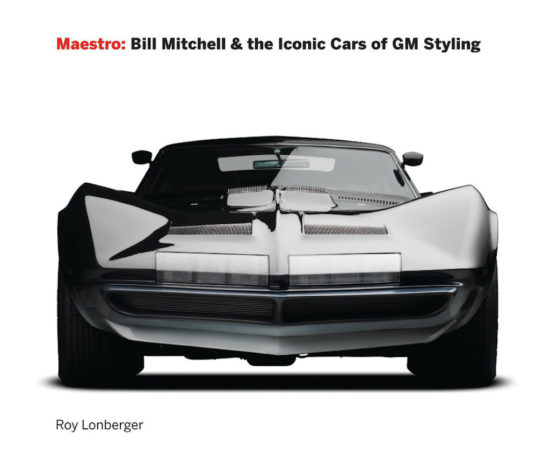
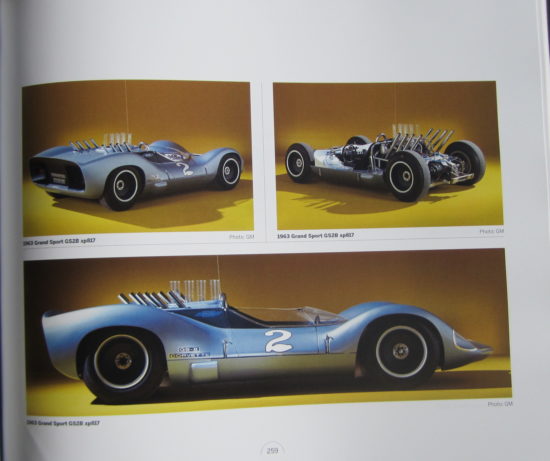
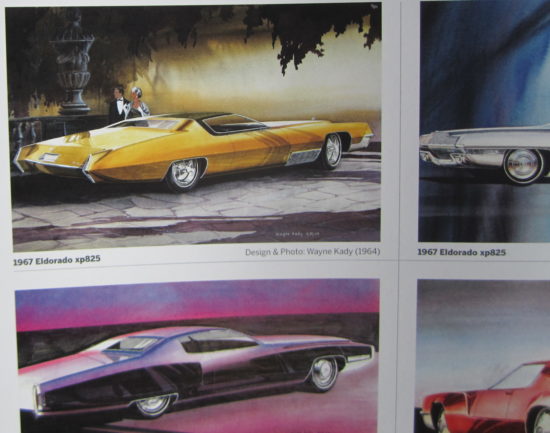
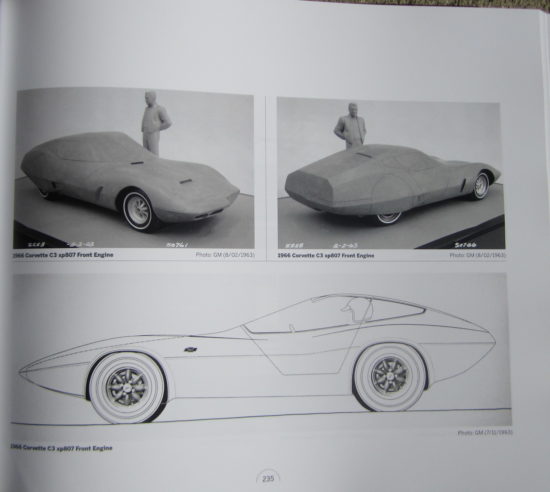

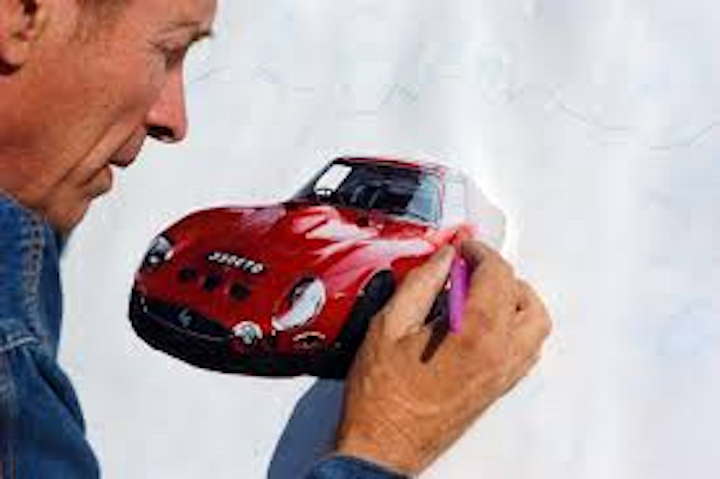

Hi,
Thanks for the good review of the book. I would like to know if the book contains any photos of clay models of Chevrolet, Pontiac etc . Somewhat similar to the magazine Collectible Automobile would run when they would highlight certain models.
Thank you,
Tom Iagrosse
Yes, many clay model shots including some I have never seen before. There are even brands long dead like LaSalle. Mitchell’s first hit at GM ws LaSalle and he was always trying to get GM to bring it back. I am with you, I ike clay model shots of “directions not followed” so much i would have been willing to have ONLY clay model shots and design renderings instead of having production cars take up precous space, because we already know what the producion models look like. We want to see the roads not taken.
Hi Wallace. I appreciate your review of my book. Well done.
I know it was a labor of love. It is sad that he became a forgotten man later in life. I don’t have children but I think if he would have had sons, and one or more gone into auto design, maybe there would be another Bill Mitchell to carry on his visions.
I used to park cars at the Fox and Hounds and he was a parking attendant’s best friend because he used to let us drive the concept cars. Real nice guy too, he always took a few minutes to chat with us about cars. Never was shy to share his opinion of a car he was not fond of either (“That car looks like it was designed by a committee.”).